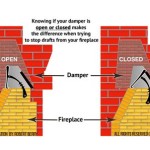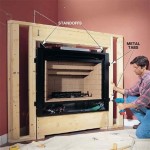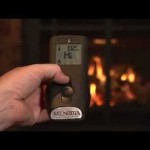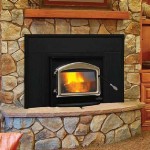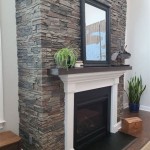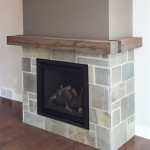Electric Brick Fireplace: A Modern Take on Classic Warmth
The electric brick fireplace represents a compelling fusion of traditional aesthetics and contemporary technology. It seeks to replicate the charm and visual appeal of a classic brick fireplace without the complexities and potential hazards associated with wood-burning or gas-powered alternatives. This article will explore the features, benefits, and considerations involved in selecting and installing an electric brick fireplace. It aims to provide a comprehensive overview of this increasingly popular heating and decorative appliance.
Electric fireplaces, in general, offer a versatile heating solution that can be easily integrated into various living spaces. They require no venting, eliminating the need for chimneys or exhaust systems. This simplifies installation and allows for placement in locations where traditional fireplaces would be impractical or impossible. The "electric brick fireplace" specifically refers to models that incorporate a realistic brick façade, enhancing their visual authenticity and contributing to a more convincing fireplace experience. The brickwork can be achieved through various methods, including molded resin, simulated brick panels, or even the use of actual thin brick veneers adhered to the fireplace unit.
Key Features and Benefits of Electric Brick Fireplaces
Electric brick fireplaces offer a range of features and benefits that make them an attractive option for homeowners seeking supplemental heating and a touch of classic ambiance. The primary advantages center around ease of use, energy efficiency, and aesthetic appeal.
One of the most significant benefits is the ease of installation. Unlike traditional fireplaces that require extensive construction and venting, electric fireplaces simply need to be plugged into a standard electrical outlet. This drastically reduces installation time and cost, making them a viable option for renters and homeowners alike. The self-contained nature of the electric fireplace also eliminates the need for complex gas lines or fuel storage, further simplifying the process.
Furthermore, electric fireplaces are remarkably energy-efficient. They utilize electricity to generate heat, often incorporating adjustable thermostat controls to regulate temperature and minimize energy consumption. Many models also feature zone heating capabilities, allowing users to heat only the room they are occupying, rather than the entire house. This can lead to significant energy savings compared to central heating systems, especially during shoulder seasons when only supplemental heat is required. The ability to operate the flame effect independently of the heating element is another energy-saving feature, allowing users to enjoy the visual ambiance of a fireplace without generating any heat.
The realistic brick façade enhances the aesthetic appeal of the electric fireplace. The simulated brickwork adds a touch of traditional charm and visual interest to any room. Manufacturers often employ sophisticated molding techniques and paint finishes to create highly realistic brick textures and colors. Some models even incorporate subtle variations in brick size and shape to further enhance the authenticity. The combination of the brick façade and the flame effect creates a convincing fireplace experience that can significantly enhance the ambiance of a living space.
Safety is another crucial benefit. Electric fireplaces do not produce open flames, eliminating the risk of sparks, embers, or carbon monoxide poisoning associated with wood-burning fireplaces. The surface of the fireplace typically remains cool to the touch, further reducing the risk of burns. This makes them a safer option for households with children or pets. Many models also include safety features such as automatic shut-off mechanisms that activate if the unit overheats.
Variations in Design and Technology
Electric brick fireplaces are available in a wide range of designs and styles, catering to diverse aesthetic preferences and functional requirements. The core technology powering the flame effect and heating element remains consistent, but the external appearance and additional features can vary significantly.
Different types of electric fireplaces lend themselves to brick facades. Insert fireplaces are designed to be installed within existing fireplace openings, offering a convenient way to retrofit a traditional fireplace with a modern electric unit. Wall-mounted fireplaces can be hung directly on the wall, providing a space-saving heating solution. Freestanding fireplaces offer flexibility in placement and can be easily moved from room to room. Mantel fireplaces combine the electric fireplace with a decorative mantel, providing a complete fireplace unit that can serve as a focal point in a room. Each of these styles can be enhanced with a brick aesthetic.
The flame effect technology also varies among different models. Some fireplaces use a rotating reflector and strategically placed lights to create the illusion of flickering flames. Others employ LED technology to project realistic flame images onto a screen. More advanced models utilize holographic technology to create three-dimensional flame effects that appear to dance and move within the fireplace. The realism and intensity of the flame effect can significantly impact the overall fireplace experience.
Modern electric fireplaces are also often equipped with a range of advanced features, such as adjustable flame speed and brightness, multiple flame color options, and remote control operation. Some models even incorporate Bluetooth connectivity and smartphone app integration, allowing users to control the fireplace from their mobile devices. These features enhance convenience and customization, allowing users to tailor the fireplace experience to their individual preferences.
The brick façade also offers opportunities for customization. The brick pattern, color, and texture can be varied to match different architectural styles and decorating schemes. Some manufacturers offer a range of pre-finished brick options, while others allow users to customize the brick façade with their own paint or stain. The ability to customize the brick façade allows homeowners to create a unique and personalized fireplace that complements their home décor.
Factors to Consider When Choosing an Electric Brick Fireplace
Selecting the right electric brick fireplace requires careful consideration of several factors, including heating capacity, style, size, safety features, and budget. Evaluating these factors will help ensure that the chosen fireplace meets the specific needs and preferences of the user.
Heating capacity is a crucial consideration, particularly for those who intend to use the fireplace as a primary or supplemental heating source. Electric fireplaces are typically rated in terms of British Thermal Units (BTUs) or wattage. A higher BTU or wattage rating indicates a greater heating capacity. The appropriate heating capacity will depend on the size of the room and the desired level of warmth. It is essential to select a fireplace with a heating capacity that is adequate for the intended use.
Style and design are equally important considerations. The electric brick fireplace should complement the existing décor of the room. Consider the color, texture, and pattern of the brick façade, as well as the overall style of the fireplace unit. Choose a fireplace that aligns with the architectural style of the home and the personal preferences of the homeowner. It is also helpful to consider the size of the fireplace in relation to the room. A fireplace that is too large or too small can look out of place.
Safety features are paramount, especially for households with children or pets. Look for fireplaces with safety features such as automatic shut-off mechanisms, cool-touch surfaces, and tip-over protection. Ensure that the fireplace is certified by a reputable safety organization, such as UL or CSA. Review the manufacturer's safety instructions carefully before using the fireplace.
Budget is always a factor in any purchasing decision. Electric brick fireplaces range in price from a few hundred dollars to several thousand dollars. The price will depend on the size, features, and brand of the fireplace. It is essential to establish a budget before beginning the search and to compare prices from different retailers. Look for fireplaces that offer a good balance of features, quality, and price. It is also important to factor in the cost of installation, if applicable.
Energy efficiency should also be a key consideration. Look for fireplaces with adjustable thermostat controls and zone heating capabilities. Consider the operating cost of the fireplace over time, taking into account the electricity consumption and the cost of electricity. Choose a fireplace that is energy-efficient and that will help to minimize energy costs.
Finally, consider the warranty and customer support offered by the manufacturer. A good warranty will provide peace of mind in case of defects or malfunctions. Excellent customer support will be helpful in resolving any issues or questions that may arise. Read customer reviews and ratings to assess the reputation of the manufacturer and the quality of their products and services.

Building An Electric Fireplace With Brick Facade

How To Build A Diy Electric Brick Fireplace Hilltown House

Touchstone 80006 Forte Recessed Electric Fireplace With 1500w Heat Black Home S Inc

E72 Electric Fireplace By European Home Very Good

Diy Electric Fireplace Full Hearted Home

Touchstone Sideline Elite 50 Inch Recessed Smart Electric Fireplace 80036 Home S Inc

How To Build A Diy Built In Fireplace With An Electric Insert The Creative Mom

How To Build A Diy Electric Brick Fireplace Hilltown House

Our New Built In Electric Fireplace Christina Maria Blog

Diy Electric Fireplace Full Hearted Home
Related Posts

